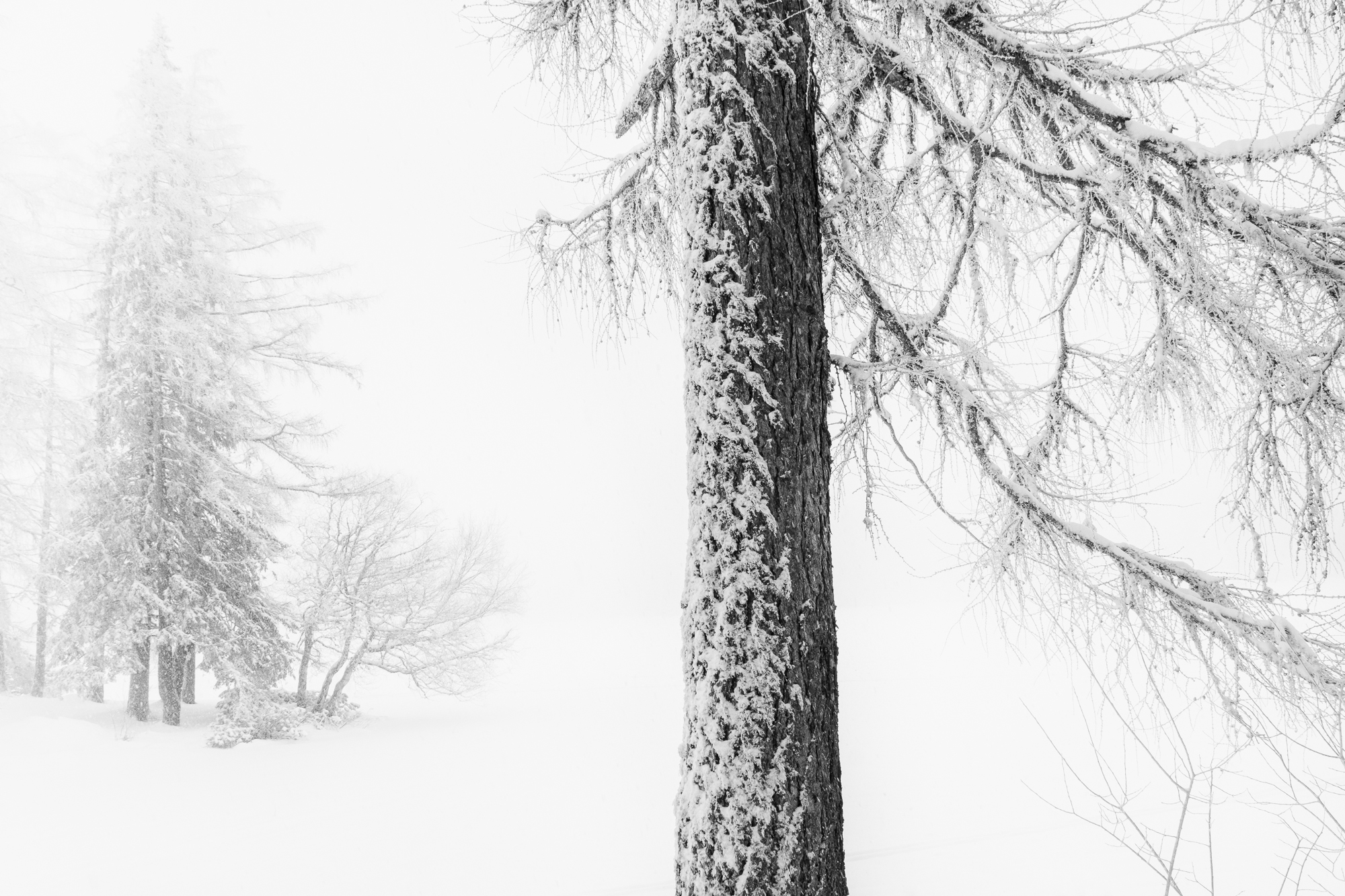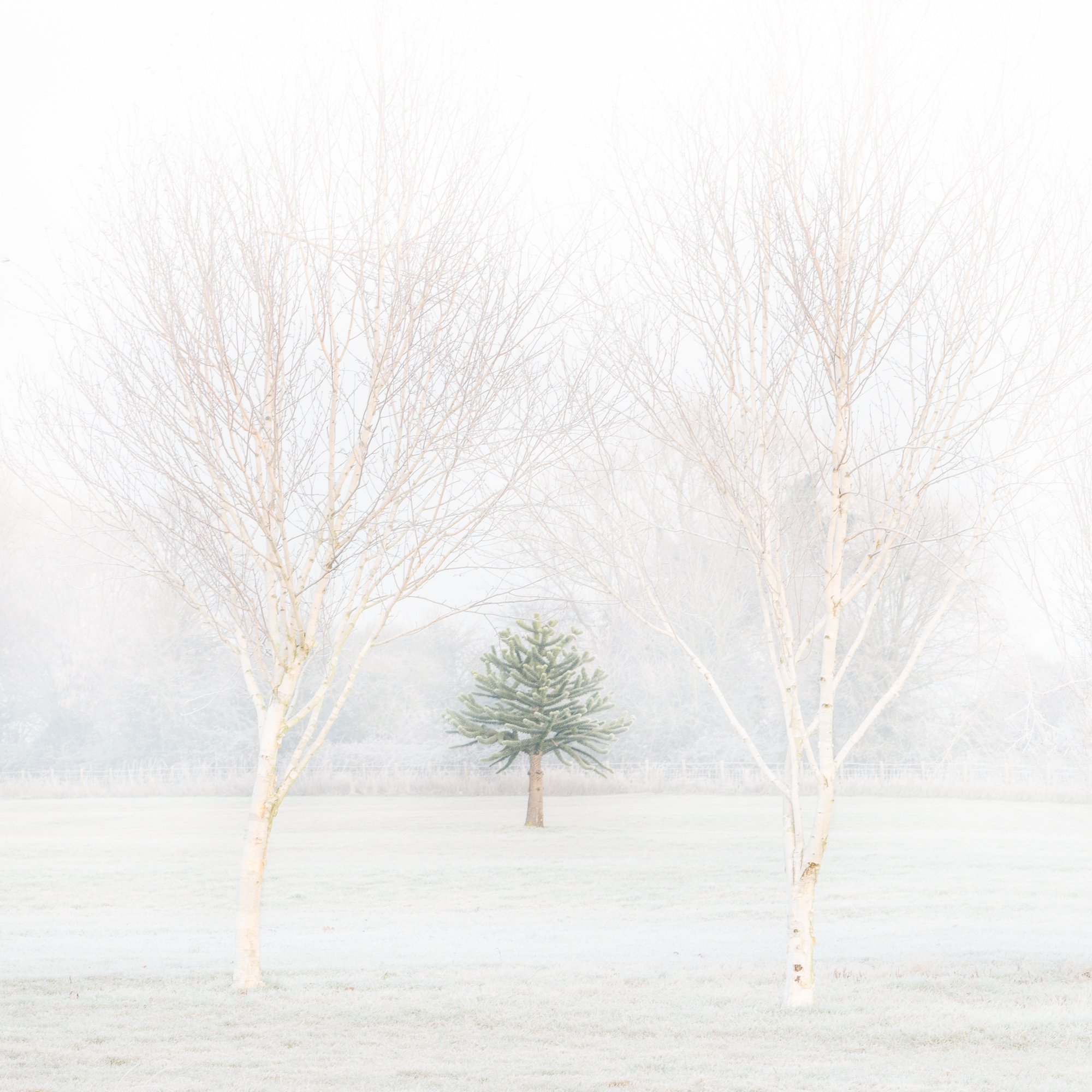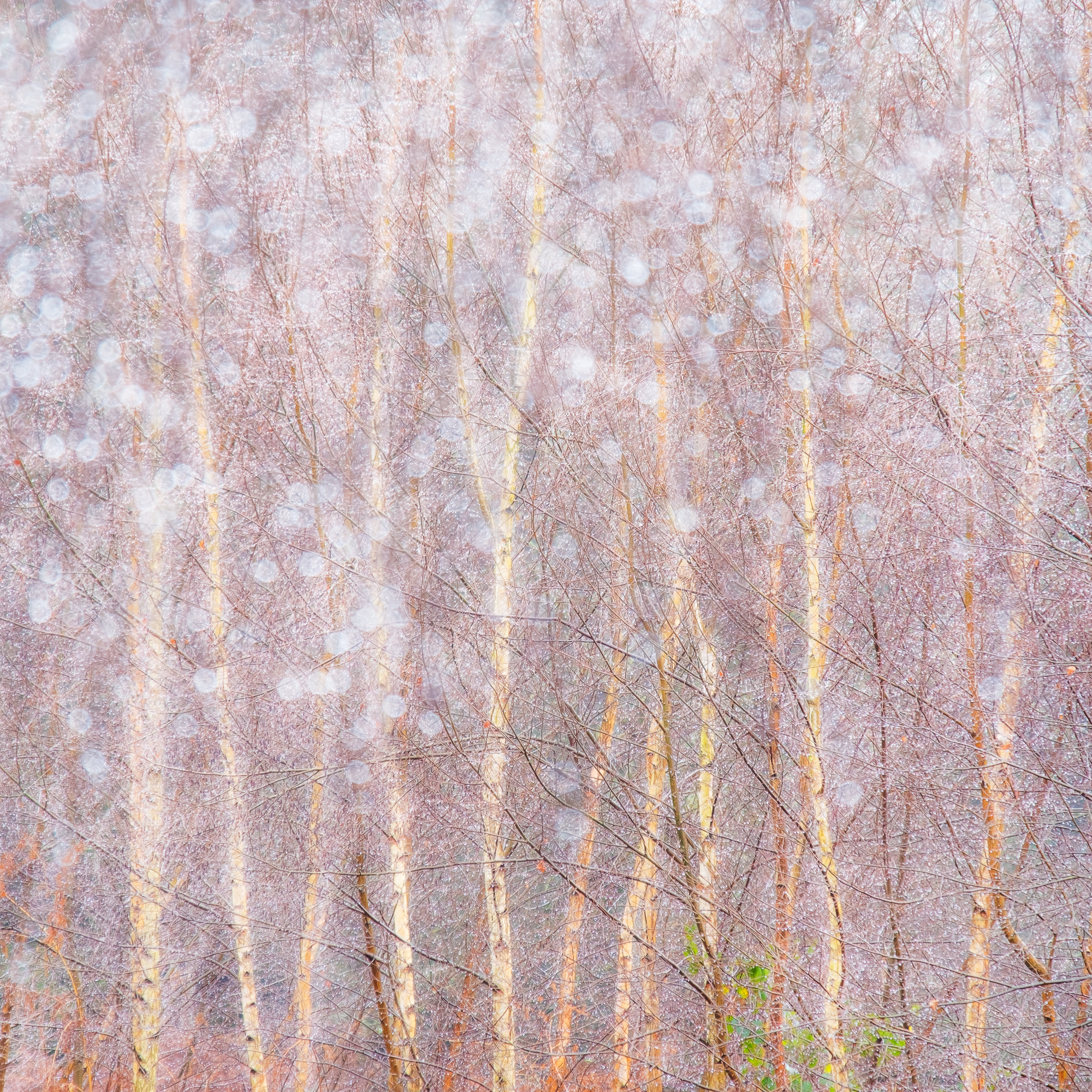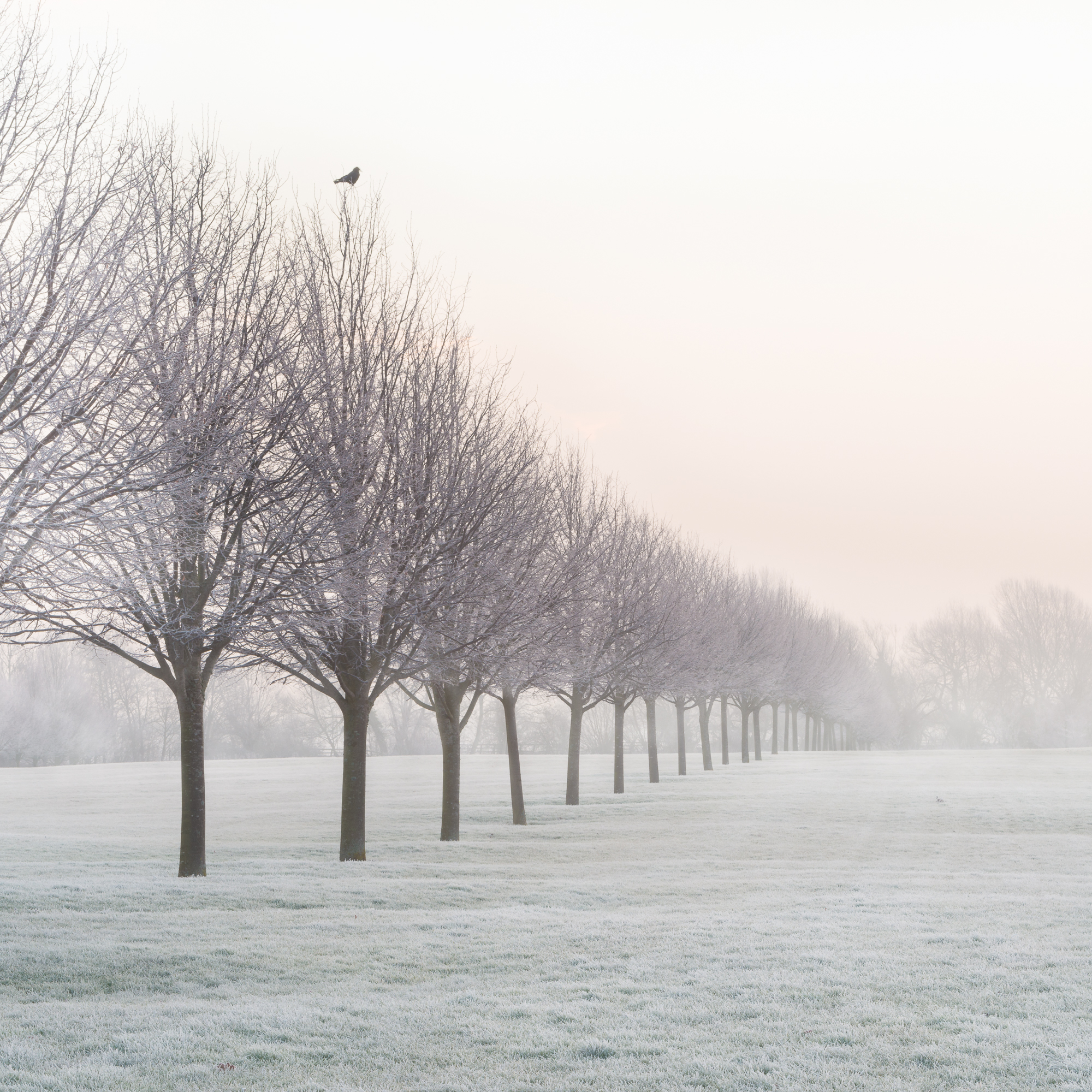
Stay Warm, Dry and Safe
This sounds obvious, however to me this is the most important aspect of winter walking and photography. No picture is worth an injury, getting ill or even losing your life.
I cannot stress enough how important it is to dress appropriately. The key is to stay warm, but also keep from becoming overheated. Both over and under-dressing can be potentially dangerous, as it can lead to an early onset of hypothermia. Perspiration can eventually lead to becoming chilled, if clothing becomes wet. The secret is in layering, starting with thermal base layers. Build up the layers with lightweight, breathable materials until you finish with a waterproof and windproof jacket. I have been using Paramo jackets for years, and cannot fault them.
Do not forget a hat, scarf and gloves.
For me, protecting my hands is absolutely essential. I suffer from Raynaud's syndrome, which means that my hands get extremely cold even in mild conditions. In freezing weather, after being exposed to the cold only for a few minutes, my fingers get numb, and eventually I cannot feel anything apart from pain. I have tried out various solutions. Fingerless gloves and gloves with a removable section do not work for me. They expose the very sensitive parts of my hands that suffer most. Battery-operated heated gloves work in a way. However they are very bulky. I have to keep taking them off to operate the camera. When my hands get wet, it is not very easy to put them back on. In the end I have come to the conclusion that a good pair of thermal liner gloves combined with waterproof and windproof Selaskinz gloves for extra cold conditions works best for me. I also think that keeping emergency hand warmers on you is a very good idea.
Most of the time when taking photographs I carry a tripod. Quite often freezing conditions make it very difficult to carry it in hand, as the tripod legs get very cold. I have a lightweight and compact carbon fibre MeFoto GlobeTrotter, which I use when walking and travelling. It has a foam grip, which is very handy when the tripod legs freeze over. If your tripod does not have one, you can buy special tripod leg warmers. When it is cold, I also find it easier to operate a remote control than the camera's shutter button.
Waterproof hiking boots and warm hiking socks are also key. It is not a bad idea to use foot warmers that fit into your boots. When walking in deep snow, I wear a pair of gaiters not to get wet inside my boots. Crampons for icy ground and ice-grippers for compact snow are very useful, in certain conditions essential, and will keep you safe on hazardous ground.
Staying hydrated and nourished is of paramount importance. Do not forget to pack water, a flask with hot tea, and snacks.
On a bright winter day, it might be a good idea to wear sunglasses to protect your eyes from the intensified light exposure caused by reflectivity of snow.
Last but certainly not least, always make sure that somebody knows where you are going. I usually go out on my own, as for me photography is a solitary pursuit. However my partner and I use the Find Friends iPhone app, so that he always knows roughly where I am. I love using the ViewRanger and CityMaps2Go apps to make sure I don't get lost. It is very easy to get carried away and forget about time and location when you are having fun. Carry a printed map as a backup. The phone battery life is significantly shortened in the cold, and by using all the apps.
Winter days are very short and dusk can fall surprisingly quickly, so do not forget about a torch.
Keep safe, always be aware of what is going on around you, and carry a whistle for emergency. It is very tempting to get immersed in photography and get lost in time and place.

Protect Your Equipment From Wet And Cold
It is crucial to keep your equipment protected from the cold, wet and snow.
First of all, a high quality backpack that offers some level of protection against the elements is a must. I use the F-Stop modular range, which also allows me to carry more than just my photography gear, but also everything I need for hiking. Make sure that you buy a waterproof cover if your bag does not come with one. I always keep a set of waterproof Sea To Summit dry bags handy just in case the weather gets too wet. They are lightweight and they come in different sizes, so you can use them for your phone, camera, lenses and anything else that needs to be protected from the wet.
I carry a supply of Calotherm microfibre lens cloths and a large microfibre travel towel. They are quick dry and handy when you need to keep your equipment and yourself dry. Soft chamois leather cloth is also a good idea.
Keep your camera cold. Do not keep it under your coat. Your body heat and the moisture from sweat can be potentially harmful, causing unwanted condensation inside your equipment. Plus the lens will fog up, and you might miss the one shot you have been hoping for. When you finish taking photographs, put the camera back into your bag.
Before you go indoors, put the camera into an airtight plastic bag, such as a self-sealing freezer bag, or waterproof dry bag. Leave it inside until it reaches the room temperature to prevent the condensation.
Have plenty of spare batteries and keep them warm. The cold causes batteries to drain much faster than normal inside the camera, and even when not in use, they will still lose their charge. I keep the spare batteries in the inside pocket of my jacket. A hand warmer placed with the batteries will keep them warm and toasty for longer.
Make sure your mobile phone is fully charged. Keep it warm, close to your body the same way you keep the spare batteries. It is useful to carry a portable phone charger for emergency.
It is imperative to keep your equipment protected from the wet when taking photographs. I use just an ordinary shower cap when the wet snow or rain gets too heavy. I keep the lens hood attached to protect the front element of the lens as best as possible.

Do Not Wait For The Perfect Conditions
I believe there is no such thing as perfect weather conditions. Do not let the gloomy skies get in the way, and get out there no matter the weather. It can be a very long wait for a clear day, especially in UK. I personally find grey days, rain and fog equally inspiring. The secret is to look beyond the obvious, experiment, forget about the rules, change your point of view, and choose the subject matter based on the available light conditions.
Combination of strong sunlight and shade often makes taking photographs tricky, making a scene look cluttered, and resulting in too much contrast. On an overcast day, the diffused light makes the harsh shadows disappear, which lends itself to simple compositions. It is the time when you can concentrate on small details around you, rather than on all-inclusive expansive landscapes. Dreary days are also time to experiment with a shutter speed. Blurring flowing water or falling snow, rain or hail can create beautiful effects.
Saying all that, pristine white snow and clear blue skies can be a photographer's dream. Direct winter sunlight presents technical challenges, but at the same time it creates many wonderful opportunities. Despite the traditional advice “don't shoot into the light, always have the sun over your left shoulder”, contre-jour can produce stunning effects. This technique creates a striking backlight, silhouettes, and reveals powerful shapes and lines.
No matter what the weather conditions are or what season you are in, there is always magic to be found in small views and details. Winter is not an exception. Nature creates little pieces of art everywhere. It is all right there before you. All you need to do is go for a wander and wonder at the wonder of it all. Silver lace of frost-covered trees, sparkling jewels of sunlit snow, silver droplets of melting ice and snow, beautifully intricate ice patterns, old leaves hanging on to bare branches or trapped in ice. The possibilities are endless. Do not be afraid to use large apertures with telephoto or macro lenses. This will allow you to create unique views with a beautiful bokeh that are invisible to the naked eye.
With all the powdery goodness and a lack of bright colours, it is very enticing to limit yourself to minimalistic black and white compositions. Winter creates ideal conditions for them. On the other hand, general absence of colour in winter is the very thing that makes any colour that is present look magnificent. I love the subtlety you can find in winter colours; from the rich russets of the old leaves, golds and yellows of the last year's grass, and soft blues in snow shadows, to gentle hues of pinks in dusk and dawn skies, and ambers and golds in early morning or late evening sunlight.

Use The Right Exposure Settings
While technical side of photography is a much less interesting topic, it is still important and unavoidable. As my photographic hero Josef Sudek said “Theory is alright, but it is like eating. When you overeat, you get sick”. Therefore I will keep this part to a bare minimum – the biggest challenge of winter photography, which is achieving the correct exposure.
The camera metering system is calibrated to base exposure on neutral tonality or neutral 18% grey. White, snow or frost-covered landscapes, or scenes enveloped in fog will trick the camera into under-exposing. Therefore your winterscapes might look dull and grey. The idea is that snow scenes are rendered white, but not overblown, and not grey at the same time. Unless it is intentional to convey a gloomy, dreary atmosphere.
There are different approaches to achieving the correct exposure. Some photographers prefer to work in manual exposure mode with spot metering and neutral grey card. Or you can always spot-meter something neutrally toned, if it is present in the scene. I usually work in the aperture priority mode and use matrix or center-weighted metering. Then I manually increase the compensation by 1 or 2 stops. The amount will vary depending on the amount of white and light. You have to be very careful when going beyond 2 stop compensation not to lose details in the highlights. I use the histogram to adjust the settings if necessary. If the image should show bright white areas, which is common for winter scenes, the histogram should show the pixels to be rendered on the right. I also switch on the camera's exposure warning to see which parts, if any are overexposed.
If the scene contains a dark subject surrounded by white snow, the answer is not that simple. Then you need to average the exposure, and recover the whites and restore shadows during post-processing. Bracketing and blending differently exposed images in Photoshop is another option, assuming you are using a tripod.
Last but not least, I always shoot in RAW file format, which is uncompressed and unedited by the camera, and captures all image data recorded by the sensor. It is essentially a blank canvas, which gives you a complete control over the final image. Therefore you can still rescue some blown highlights or recover dark shadows. To a certain point. Saying that, the best practice is always to try and get it right in the camera. Save yourself a valuable time you can spend on being outdoors and taking photographs, as opposed to sitting in front of a computer screen.

Do Not Forget To Have Fun
All these dos and don'ts can be quite daunting. Still, there is one more, very important don't – don't forget why you go out in the first place. As long as you keep safe, have fun. Go for a walk, look for all the magical wonders along the way, immerse yourself into the beauty that surrounds you, and take photographs that bring you joy. My partner says “It's always worth walking up the hill. There is always a reward for it”. If it is not exactly the photograph that you were hoping for, then it might be finding a new, exciting location you can return to, a beautiful view, a small detail you never noticed before, or just the comforting glow and rosy cheeks after a fun-filled day spent in the fresh air.